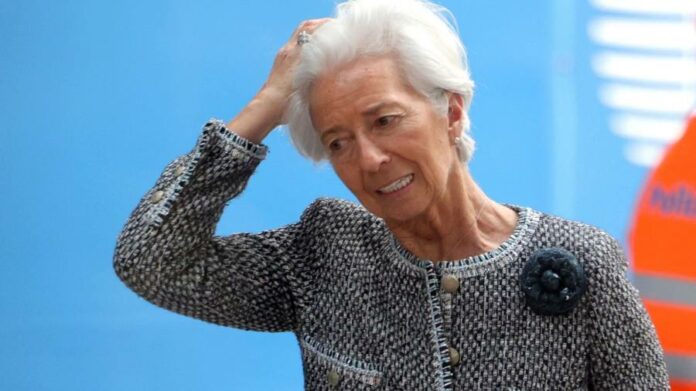How fast is eurozone inflation falling?
European Central Bank president Christine Lagarde said last week that eurozone inflation would “decline steeply this year” while underlying inflation pressures would “remain strong”. Data to be released on Friday will show how these two trends are playing out.
Inflation in the 20-country single currency zone has fallen for four consecutive months since hitting a record high of 10.6 per cent in October and it is expected to fall again from 8.5 per cent in February to 7.3 per cent in March, according to a Reuters poll of economists.
However, any relief at the ECB over this drop could be offset by an expected rise in core inflation — which strips out energy and food prices to give a better picture of underlying price pressures — from 5.6 per cent to a new eurozone record of 5.7 per cent.
Economists think this month’s turmoil in the banking sector is likely to make lenders more cautious, squeezing credit supply and reducing price pressures. But it is probably too soon for this to have much impact on Friday’s inflation data.
A purchasing managers’ survey published by S&P Global last week pointed to more strong growth in wages and companies’ selling prices, particularly in the services sector. Franziska Palmas, an economist at Capital Economics, said this “adds to the reasons to think that, as long as the banking crisis doesn’t escalate much further, the ECB will continue to hike rates”. Martin Arnold
How much will Chinese economic activity have slowed?
Investors are expecting slower growth in China’s business activity ahead of the latest purchasing managers’ indices on Friday. But markets could come under further pressure if either of the official growth gauges underperforms — or slips into contractionary territory.
Economists polled by Bloomberg have forecast China’s manufacturing PMI to come in at 51.8 in March, down from 52.6 for the January-February period and closer to the 50-point line separating expansion from contraction. The non-manufacturing PMI, which includes the country’s vast services sector, is tipped to dip to 54.3, from 56.3 previously.
Analysts said that while recent data for industrial production, investment and retail sales in China had all shown at least modest growth, the country’s recovery from a long period of economically disruptive Covid-zero policies would be gradual and remained vulnerable to external demand shocks.
Iris Pang, chief Greater China economist for ING, predicted slowing demand for Chinese goods from foreign markets was likely to result in a drop for export orders in March, but expected a simultaneous boost for domestic orders. She added that while a recent rise in housing purchases was likely to support the non-manufacturing PMI, which includes the construction sector, “it should not be seen as a growth factor”.
Alicia Garcia Herrero, chief Asia-Pacific economist at Natixis, said China’s reopening was “clearly improving this year’s economic outlook . . . but there are still challenges, especially from very weak external demand”. Hudson Lockett
Will the Fed’s preferred measure slow further?
The Bureau of Economic Analysis will on Friday release the February figures for the core personal consumption expenditures index, the Federal Reserve’s preferred measure of inflation.
Some parts of the data are expected to show that price rises slowed last month, after a surprising acceleration at the start of the year, attributable to a one-off increase in social security payments.
Economists surveyed by Bloomberg forecast that headline PCE will have slowed from 5.4 per cent in January, year over year, to 5.1 per cent in February. But the core figure — which strips out the volatile food and energy sectors, and is more closely watched by the Fed — is expected to remain flat at 4.7 per cent.
That stagnation is likely because of the continued strength in shelter and other services costs, argue analysts at Credit Suisse, even as the prices of goods prove disinflationary.
The data comes after the Fed raised interest rates by 0.25 percentage points at its meeting last week, and indicated in its “dot plot” that officials expect interest rates to be raised only one more time this year, even amid signs of persistent inflation.
The transatlantic angst in the banking sector has driven interest rate expectations lower, with experts, including Fed chair Jay Powell, saying that the resulting tightening of credit conditions is likely to have the same effect as an interest rate increase. Kate Duguid






